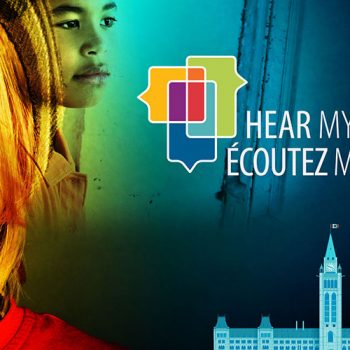Guest article: John Young, Canadian Museum for Human Rights
The Canadian Museum for Human Rights tells the stories of thousands of people. Some of them are well known, here in Canada and around the world, but many more are not – they are everyday heroes who stood up for their rights or the rights of others after simply deciding that enough was enough.
Maréshia Rucker and her friends fought against segregation and for racial inclusion at their prom in 2013. Travis Price took a stand against bullies at his high school in 2007. Jeannette Corbiere Lavell fought for equal treatment of Indigenous Canadian women in 1973. Calgary mothers Christine Meikle and Emily Follensbee challenged a 1950s education system that had no place for their children, who were born with Down’s Syndrome.
Stories like these are not simply memories or history lessons. They link the past to the present, where there is still much work to do. They can inspire a new generation of Canadians to become human rights defenders and help them envision a brighter future for everyone.
At the Canadian Museum for Human Rights we recognize the importance of sharing these stories with young people, because human rights education is at the core of what we do. It was nearly one year ago, in January 2015, that the Museum launched its first school programs. These programs are curriculum-based, age-appropriate, inclusive and accessible. They are designed for a diverse range of students and use various Museum exhibits to educate and encourage discussion about human rights.
Over 20,000 Manitoban schoolchildren, ranging from primary to secondary school students, visited the Museum through this program during its first five months of operation. During the 2015-16 school year, we have started welcoming the first students to visit us as part of a pilot national student program.
Our commitment to human rights education doesn’t end inside the Museum’s walls. Research has shown that only one in four teachers have received any formal training in human rights education and that there are gaps in resources available to educators. To address this we worked in partnership with the Canadian Teachers’ Federation to create the Canadian Human Rights Toolkit, a searchable database of education resources available in both English and French for grades K-12. Since the fall of 2014, educators from coast to coast have accessed more than 67,000 resource pages in the tool kit.
More recently, the Museum collaborated with the Canadian Teachers’ Federation, the Assembly of First Nations, Inuit Tapirit Kanatami and Robert F. Kennedy Human Rights to create an entirely new online teaching resource called Speak Truth to Power Canada: Defenders for Human Rights (STTP Canada).
This resource features the inspiring stories of 12 Canadian human rights defenders. They are people like Jeremy Dias, who took his experience of being bullied in school and used it to help other youth facing discrimination and Remzi Cej, who arrived in Canada as a teenage refugee and grew up to become a human rights activist. STTP encourages students to identify as human rights defenders and provides advice and direction for educators who teach human rights.
Of course, education doesn’t just happen in the classroom, nor does it begin when kids enter school. We can start teaching some of the concepts that underpin human rights education to younger children as well. For that reason, we were thrilled to welcome our second travelling exhibit, called XOXO: An Exhibit about Love and Forgiveness, in October.
XOXO encourages children to understand how their actions can have an effect on the world around them. It encourages them to develop compassion and empathy for others. Perhaps most importantly, it is a lot of fun! Children, teens and adults alike have been enjoying the hands-on nature of the XOXO exhibit.
Under all we do at the Museum, there is an underlying message of hope – hope for human rights education and for our future as a country and society. If you haven’t had a chance to visit the Museum yet, I invite you to come experience it. I also invite you to visit our website and take a look at our educational resources, at www.humanrights.ca. There are thousands of individual stories – which ones will inspire you?


